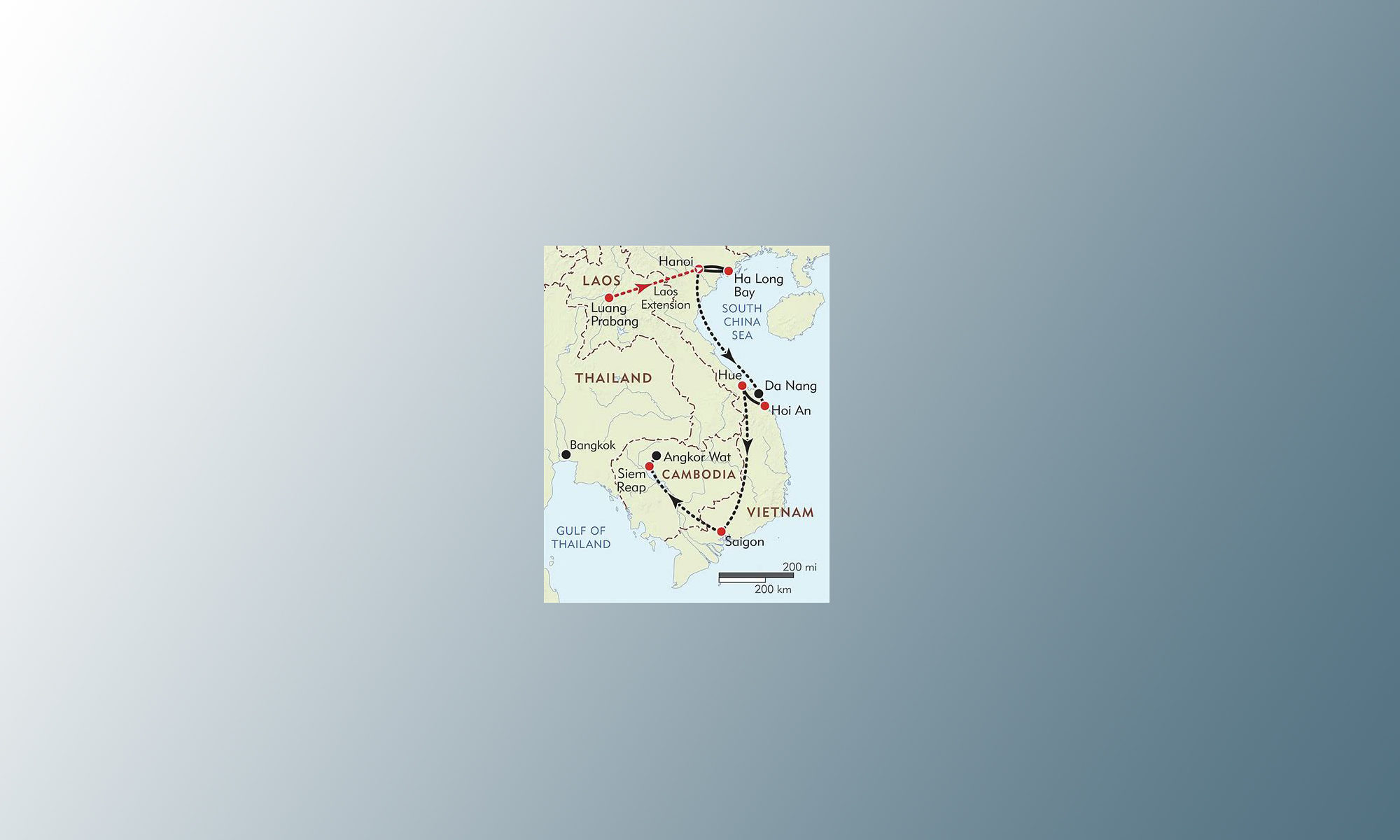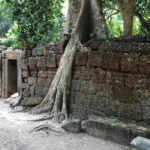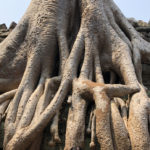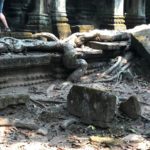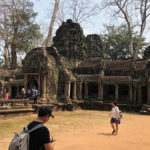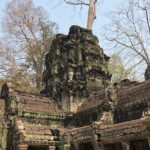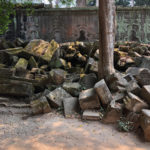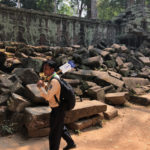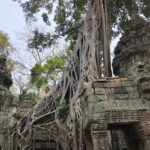February 17, 2018
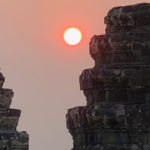 Sunrise over Angkor Wat. We got up at 0400 and departed fpr theeast side of Angkor Wat and climbed a 700 meter path to a temple and the up 50 ladder like steps the the top, fortunately there was a hand rail.
Sunrise over Angkor Wat. We got up at 0400 and departed fpr theeast side of Angkor Wat and climbed a 700 meter path to a temple and the up 50 ladder like steps the the top, fortunately there was a hand rail.
Following the sunrise at 0626 we drove to the foot of Angkor Wat for a box  breakfast at a local snakier like restaurant which consisted of Hard Boiler egg, Yogurt, sausage, bacon, juice, an apple and orange a Croissant, a ham sandwich, two slices of white bread, banana bread, butter and jellywater, coffe and Tea.
breakfast at a local snakier like restaurant which consisted of Hard Boiler egg, Yogurt, sausage, bacon, juice, an apple and orange a Croissant, a ham sandwich, two slices of white bread, banana bread, butter and jellywater, coffe and Tea.
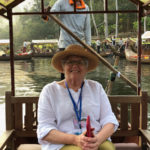 Then we went to the moat surrounding Angkor Thom and boarded a gondola for a ride up the moat and back down observing Water Hyacinth, Water Lily’s and other work being done to keep the moat clear.
Then we went to the moat surrounding Angkor Thom and boarded a gondola for a ride up the moat and back down observing Water Hyacinth, Water Lily’s and other work being done to keep the moat clear.
Angkor Thom
Angkor Thom is an almost square city surrounded by 8 meter high walls a little over 12 kilometers long with five impressive gopura gates providing access to the city. The city’s name translates to “large city” or “great city”.
King Jayavarman VII made Angkor Thom the new capital of the Khmer Kingdom after driving out the Chams , who destroyed the old capital Yasodharapura. He fortified the city by building a high wall around it, in turn enclosed by a 100 meter wide moat.
Older temples already at the grounds
At the site where the new city was built, a few older monuments were already in place, most noticeably the Baphuon temple (mid 11th century) and the Phimeanakas (10th or early 11th century).
Jayavarman VII’s new Royal Palace & state temple
King Jayavarman VII built his state temple, the Bayon, at the center of the city. Just to the North he built his Royal Palace. Since it was built of perishable materials, nothing of it remains today except for the Royal Terraces that were made of stone. The Elephant terrace and the Leper King terrace formed the Eastern boundary of the Palace enclosure. The city was inhabited by tens of thousands of common people who lived in wooden houses, that have long gone. The city was highly developed with a system of roads and waterways, as well as four hospitals.
Decline and late 19th century rediscovery
After the Khmer Kingdom went into decline, the city was at one point deserted and left to the jungle. In the 19th century, the site was rediscovered by French explorers, soon after which the EFEO (the École Française d’Extrême-Orient) began clearing works and restoration of the monuments overgrown by thick jungle.
Entrance gates to the city
The city is surrounded by high defensive walls, 3 kilometers long on each side. To the inside of the wall is an earth embankment, which allowed the Khmer good views of approaching enemy armies.
Access to the city was through five gopura gates, one at the center of each wall, an extra one (the Victory Gate) on the road from the Royal Palace to the East Baray. The gates were built between the end of the 12th century and early 13th century. The gopuras consist of a central tower, 23 meters in height, flanked by two smaller towers.
The giant faces on the towers
The towers, known as “face towers” similar to those at the Bayon, contain four very large heads on top of the gates facing each of the four cardinal directions. They are believed to represent Lokeshvara, the Bodhisattva of compassion. The central tower contains 2 faces looking in opposite directions; each of the smaller towers have 1 face each looking in one of the remaining two directions.
A great deal of knowledge about the history and daily life in Angkor was gained from the accounts of Zhou Daguan, a Chinese diplomat who lived in Angkor for a year until July 1297. According to him, there was a fifth head on the gopura’s top at the time, of which nothing remains today.
On the ground level of the gates on either sides of the entrance is a large sculpture of Airavata, the three headed mythological elephant with the God Indra sitting on his back. The opening of the gates are 7 meters high by 3½ meters wide in which there were originally massive wooden doors that were closed at night. Most visitors to Angkor Thom use the well preserved South gate, that was restored in the 1950’s.
Ta Prohm
One of the most famous temples in Angkor, the Ta Prohm is known for the huge trees and the massive roots growing out of its walls. The jungle temple also featured in the adventure movie “The tomb raider”; several shots were filmed in the Ta Prohm.
The temple was intentionally left in much the same way as it was when Henri Marchal, curator and conservator of the EFEO did some basic clearing work in 1920. Only the most necessary work to prevent further deterioration and collapse was done. The attractive jungle setting and the original state of the temple has made it one of the most visited Angkor temples.
Lately, things have changed at the Ta Prohm. The protect the temple from growing roots damaging the structure and from the danger of falling trees destroying the monument, a number of trees have been removed and restoration works have been carried out.
Buddhist temple
The Ta Prohm was build during the last decades of the 12thcentury by King Jayavarman VII. Where the older Angkor temples were Hindu temples dedicated to Shiva and Vishnu, the Ta Prohm is a Buddhist temple, as King Jayavarman VII was a follower of Mahayana Buddhism. The King dedicated the temple to his mother.
The stele of the Ta Prohm
A lot of knowledge about the Ta Prohm is gained from the stone stele dated 1186 written in ancient Sanskrit language that was found in the temple. The stele praises King Jayavarman VII, Lokeshvara (a Bodhisattva in Mahayana Buddhism), Prajnaparamita (the perfection of wisdom) and the Three Jewels of Buddhism, namely the Buddha, the Dharma (the Buddhist teachings) and the Sangha (the Buddhist community).
It contains a list of all products used for religious ceremonies and lists the number of villages, priests and dancers that were to serve the temple. The stele also mentions that at the time there were 102 hospitals spread over the Khmer empire and a list of items that each hospital was to keep in stock. The stele then cites that there were 121 rest houses spread over the empire, along the major routes from Angkor to places as far away as Phimai in Thailand or the Kingdom of Champa in present day Vietnam.
